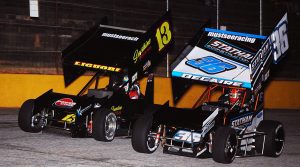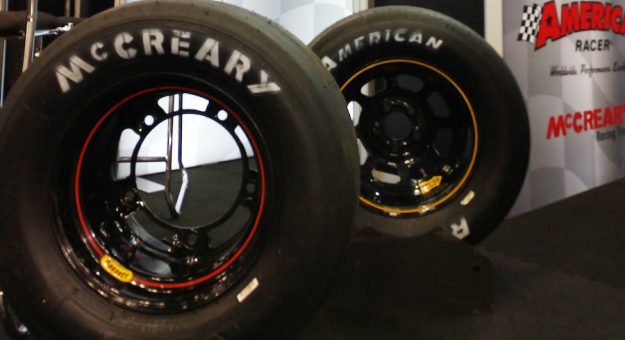INDIANA, Pa. — An ongoing tire shortage has become a spicy topic within the racing industry the last few months.
American Racer Director of Racing Scott Junod addressed the situation during the Performance Racing Industry show in December before publicly posting a letter he sent to distributors and dealers in late January, noting the primary problem is the raw material supply along with shortages of certain chemicals and as well as unfilled jobs within the company.
“The situation that we’re running into right now is primarily a shortage of nylon,” he told SPEED SPORT on Feb. 1. “The reinforcing fabric (in tires) is nylon of different varieties, different gauges, different types. From there you coat it with rubber and make a ply treatment. You cut that and make it into tires. You build your base ply out of that. When you don’t have nylon, you can’t build your tires. It’s not that the industry has been shut off. Demand has been super high. Those different companies that we do business with are running into the same problem we are, which is getting enough labor or even raw materials on their side. If things aren’t humming properly in that deal, we run into shortages.”
Much like hand sanitizer and toilet paper in 2020, or bread and milk the night before a storm hits, panic buying has sped up the impact of the shortage.
“We’ve learned lessons, certainly,” Junod said. “The main one being, this is the one that was the most alarming to us, at the beginning of last year, in January 2021, for some reason in our organization we sensed there was going to be a real push to hoard-buy product. I guess we were looking at the orders that were on the books. The demand was getting a little bit crazy for that early in the year based on some of the shipments going out and I was talking to our distributors. A guy that would normally buy 100 is now buying 250. You started seeing this idea where I better get all my stuff right now.
“We learned a valuable lesson there,” Junod continued. “You have to start the season off with some sanity. You can’t be the wild west and you sell everything you’ve got. Once that happened last year, you’re behind the eight ball.
“You have to sense what’s going on in your area and you have to start the season with some sanity. Sell people tires what they need, not what they want until further notice,” he noted. “That’s the biggest lesson we learned was need versus want. We’d love to sell more tires, but we can’t do it at the expense of the industry. If everyone is hoarding product it’s bad. People need to calm down and buy what they need and there will be enough tires to go around.”
American Racer is starting the 2022 racing season with a historically low inventory.
“I have three quarters of a year, nine months of tires on order right now,” Junod said. “Normally I’d have a pretty full warehouse of two or three months’ worth of tires waiting to start the season for the big push in March. I have less than half of that sitting here now. It’s gonna be a tough spring. This could continue into the season.
“We’re doing everything that we can to try to shore up our supply lines. Everybody is going after whatever they can get their hands on and we’re no different,” Junod noted. “We’re trying to turn over every rock to continue to produce the tires we need to get our customers supplied. At this point we’re pretty much a passenger on the train.”
Junod noted that the shortage has impacted dirt and asphalt racing equally.

“What I think is going to happen is, because of the nylon shortage we haven’t been able to build inventory like we normally would during the offseason,” he said. “The offseason isn’t an offseason anymore. The trend is everyone doing early events and events in the winter if they can do it. It used to be October 1 through March 1 were offseason months where you could build some inventory.
“That’s not the case anymore. We’re seeing more and more offseason racing activity,” Junod added. “That’s a trend that I think is going to continue. We sell tires down under, to Australia and New Zealand, and they’ve been racing. Our offseason is the middle of their summer. There’s no letup in it as much as there used to be. There continues to be a push for product. That’s a trend that is occurring that is putting stress on the supply chain as well.
“We’re starting the season with historically low inventories and that could translate into delays in certain places in the start of the season,” Junod said. “I foresee there’s going to be some tightness that’s going to happen because we haven’t been able to build the inventory we’ve wanted to. I don’t want people to run into a fist. There’s no inventory in the whole supply chain. It got used up last year because of high demand. This year is starting off at the same clip. We’re going to run into some tightness.”
